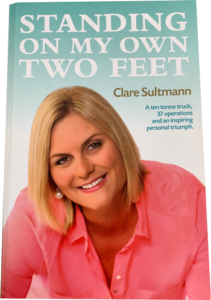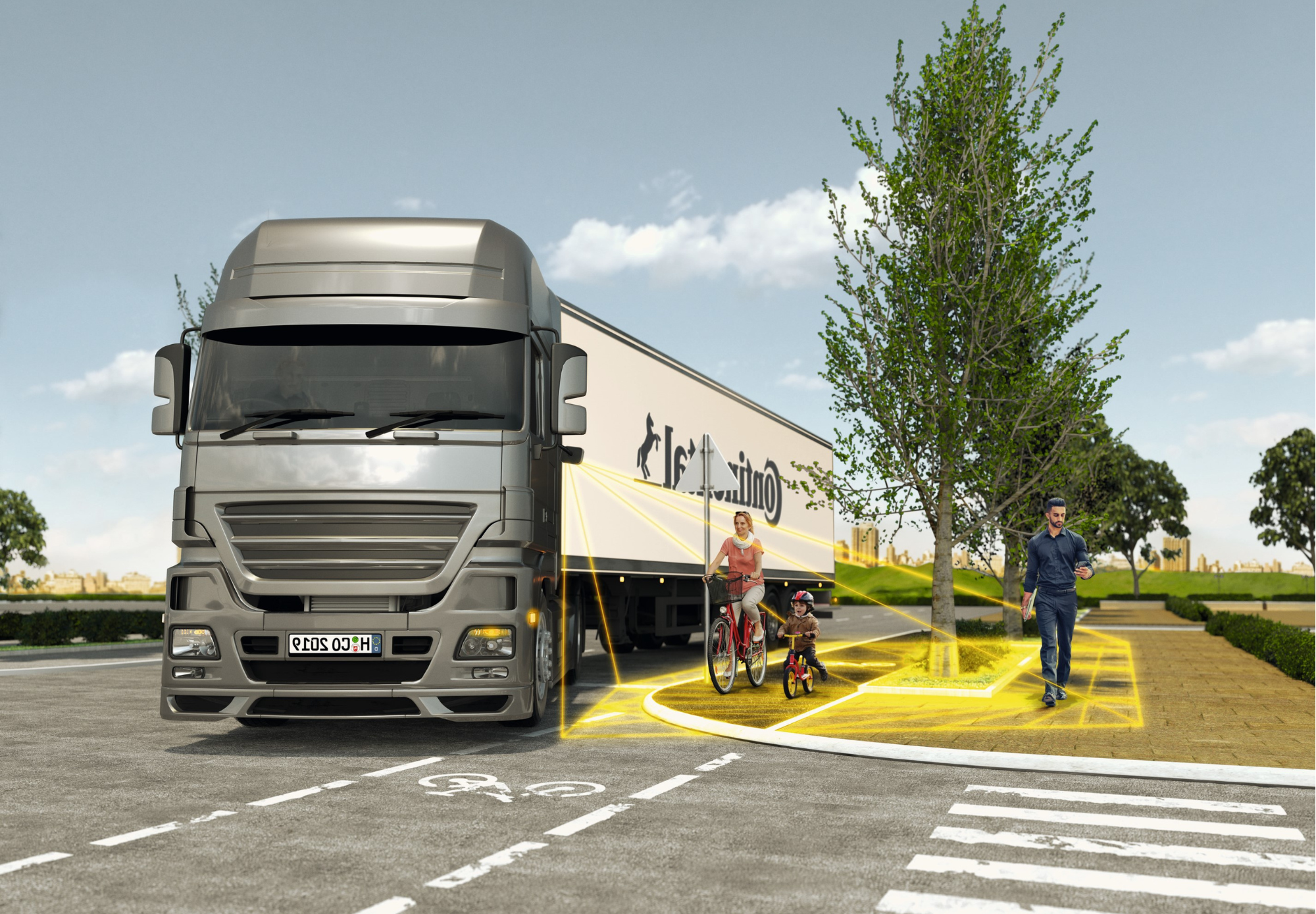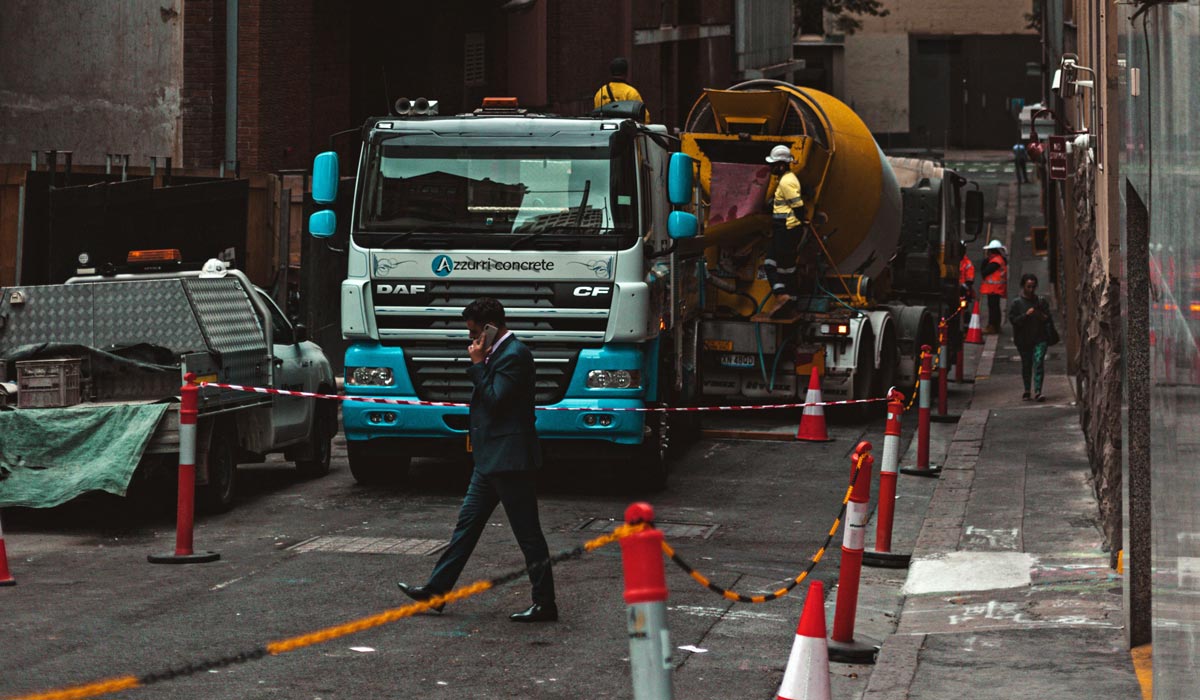Brisbane Olympics Construction
The Brisbane 2032 Olympics will herald a construction boom across SE QLD. With that comes increased risks to Vulnerable Road Users. Will SE QLD...

That reminder came recently when reading the autobiography Standing On My Own Two Feet by Clare Sultmann who today is Clare Stewart, Mayor of Noosa Council.
Early one August morning in 2000 at 23 years of age, Clare was on her regular morning jog around Sydney’s Eastern suburbs when she was hit by a garbage truck on a pedestrian crossing.
She had looked to the left, right and left again, but didn’t see the truck behind her until it was too late. She tried to hurtle herself back off the road. The truck driver, turning the corner, didn’t see her till it was too late, braking as fast as he could to stop in time.
Stop he did…on top of her legs…for 37 minutes…until the police rescue squad were able to lift the truck and release her. Claire’s urgent plea to ambulance officers and emergency medical staff was to save her legs.

They were, as you can imagine, a total mess. Beyond her obviously broken bones, much of her skin and muscles had been torn away, tendons had been severed, and essential blood vessels were damaged beyond repair.
The book is a monumental eye-opener in terms of understanding the damage that a heavy vehicle can do to the human body, what it takes to recover from an accident, and the impact on those around the injured pedestrian. It shows just how vulnerable joggers, pedestrians, and cyclists are in an encounter with a vehicle – even when the vehicle is not travelling that fast.
What followed were years of operations, struggles and setbacks, but also hard-gained progress through Clare’s tremendous resilience, determination and readjustment in order for her to be able to walk again unaided.
Within days of her accident, Clare’s mother retired from her teaching position to become her full-time carer. Having so many operations made it impossible for Clare to hold down a full-time job, so continuing with tertiary studies became one of the ways Clare focussed on moving past her difficulties.
An initial six month stay in hospital, excruciating leg pain because of atrophy, and more than 37 operations were just some of the challenges that Clare faced throughout her journey.
Aside from dealing with physical challenges of recovery, there were the added stresses of the mental anguish surrounding the accident, as well as intrusion of private investigators: their cameras monitoring her movements for their insurance company client.
Fortunately for Clare, her tenacity and her legal team eventually secured her a favourable settlement. As she reveals in her autobiography, it is unlikely she will ever be able to run, powerwalk, or play tennis again – all things we take for granted.
It’s no wonder that she has serious concerns about the safety of heavy vehicles in the Noosa Shire hinterland.
If twenty years ago there were better ways to protect and detect vulnerable road users, Clare’s life could have been much different.
With thousands of council garbage trucks on the road every day across Australia, vulnerable road user accidents are an ever-present possibility.
SGESCO-MAX has a several market-leading safety solutions – some of which are already in use by SUEZ and Cleanaway – aimed at preventing accidents and protecting vulnerable road users, such as joggers and cyclists – or even mums pushing a pram.
Our key Blind Spot Monitoring solutions can prevent trucks hitting pedestrians when turning corners. Solutions we offer include:
Many people are unaware of the extent of blind spots on a heavy vehicle like a garbage truck. There are blind spots in every direction. Typically, the driver, from up in their cabin, cannot see:
This image, courtesy of the National Road Safety Partner Program, highlights what is not seen in mirrors and due to a truck’s pillars’ (think Window frames) obstructing the view.

These blind spots are why technologies like radars, lidars, and sonars need to be installed to detect and alert drivers to vulnerable road users nearby.
A number of European countries are now moving away from having garbage trucks collect garbage, opting instead for automated neighbourhood underground rubbish systems.
A Swedish company, Envac, is currently installing this technology via a 6.5-kilometre network of underground pipes in Maroochydore, on Queensland’s Sunshine Coast – the first application of this technology in Australia. A new Caboolture West development of 10,000 homes north of Brisbane will also likely have this technology installed, because it’s a cleaner, greener, and safer solution than standard garbage collection. In fact, Envac expects many Australian councils will look at adopting the technology in the next five years.
Retrofitting the system to existing neighbourhoods can be a slow process though, which is why the responsible thing for the garbage industry to do is install blind spot detection technologies to their fleets to protect vulnerable road users. The same goes for similar industries that use heavy vehicles on our urban roads.
Discover more about our blind spot solutions for protecting vulnerable road users.
Copies of Clare’s book can be purchased online from here.

The Brisbane 2032 Olympics will herald a construction boom across SE QLD. With that comes increased risks to Vulnerable Road Users. Will SE QLD...

Blind spots at the front, corner and sides of heavy vehicles are often the main cause of collisions with vulnerable road users, resulting in...

Australia’s heavy vehicle fleet will likely undergo a major transformation in the next decade to meet a number of road safety and climate objectives.